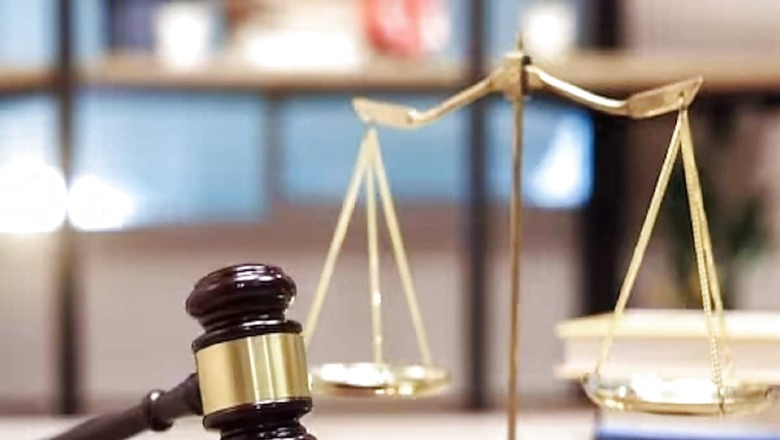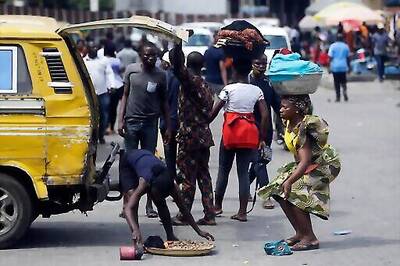
views
The Centre had yesterday notified three criminal laws — Bharatiya Nyaya Sanhita, Bharatiya Nagarik Suraksha Sanhita and the Bharatiya Sakshya Adhiniyam –, which will come into effect from July 1, replacing the Indian Penal Code, Code of Criminal Procedure and Evidence Act, respectively.
Let us see what changes the new central laws will bring.
Bharatiya Nyaya Sanhita
It will replace the 163-year-old Indian Penal Code and effectuate major changes in the penal law.
Community service has been introduced as a form of punishment under Section 4 of the new act, although it has not been defined what community service entails.
Sexual intercourse: The new law provides that whoever, by deceitful means or by making promise to marry to a woman without any intention of fulfilling the same, has sexual intercourse with her, such sexual intercourse not amounting to the offence of rape, shall be punished with imprisonment, which may extend to 10 years and also be liable to fine. ‘Deceitful’ shall include inducement for, or false promise of employment or promotion, or marrying by suppressing identity.
Organised crime: Any continuing unlawful activity including kidnapping, robbery, vehicle theft, extortion, land grabbing, contract killing, economic offence, cyber-crimes, trafficking of persons, drugs, weapons or illicit goods or services, human trafficking for prostitution or ransom, by any person or a group of persons acting in concert, singly or jointly, either as a member of an organised crime syndicate or on behalf of such syndicate, by use of violence, threat of violence, intimidation, coercion, or by any other unlawful means to obtain direct or indirect material benefit including a financial benefit, shall constitute organised crime.
Terrorist Act: The act provides that whoever threatens or likely to threaten the unity, integrity, sovereignty, security, or economic security of India or with the intent to strike terror or likely to strike terror in the people or any section of the people in India or in any foreign country, will constitute of committing a terrorist act.
Mob lynching: The new law clearly states that “When a group of five or more persons acting in concert commits murder on the ground of race, caste or community, sex, place of birth, language, personal belief or any other similar ground each member of such group shall be punished with death or with imprisonment for life, and shall also be liable to fine”.
Bharatiya Nagarik Suraksha Sanhita (BNSS)
It will replace the Criminal Procedure Code, 1973 (CrPC), which is a procedural law governing the administration of the Indian Penal Code, 1860 (IPC).
Under-trials: According to an analysis by PRS Legislative Research, CrPC provided that if an under-trial has served half of the maximum imprisonment for an offence, he must be released on a personal bond. This provision does not apply to offences punishable by death. The BNSS retains this provision and adds that the first-time offenders get bail after serving one-third of the maximum sentence. However, it adds that this provision will not apply to: (i) offences punishable by life imprisonment, and (ii) where an investigation, inquiry or trial in more than offence or in multiple cases are pending. Since charge-sheets often list several crimes, this may make under-trial prisoners ineligible for mandatory bail.
Forensic Probe: The new law mandates forensic investigation for offences punishable with at least seven years of imprisonment. In such cases, forensic experts will visit crime scenes to collect forensic evidence and record the process on mobile phone or any other electronic device. If a state does not have a forensics facility, it shall utilise such a facility in another state.
According to the PRS Legislative Research, some of the key changes proposed in the new law are as follows:
Timelines for procedures: The Bill prescribes timelines for various procedures. For instance, it requires medical practitioners who examine rape victims to submit their reports to the investigating officer within seven days. Other specified timelines include: (i) giving judgment within 30 days of completion of arguments (extendable up to 60 days), (ii) informing the victim of progress of investigation within 90 days, and (iii) framing of charges by a sessions court within 60 days from the first hearing on such charges.
Hierarchy of Courts: The CrPC establishes a hierarchy of courts for the adjudication of criminal matters in India. These courts include: (i) Magistrate’s Courts: subordinate courts responsible for the trial of most criminal cases, (ii) Sessions Courts: presided over by a Sessions Judge and hear appeals from Magistrate’s Courts, (iii) High Courts: have inherent jurisdiction to hear and decide criminal cases and appeals, and (iv) Supreme Court: hear appeals from High Courts and also exercise its original jurisdiction in certain matters. The CrPC empowers the state governments to notify any city or town with a population of more than one million as a metropolitan area. Such areas have Metropolitan Magistrates. The Bill omits this provision.
Bharatiya Sakshya Adhiniyam
Bharatiya Sakshya Adhiniyam will replace the Evidence Act. It has also proposed some important changes.
Electronic Evidence: According to an article written by Pranav Verma and Anupama Sharma, Assistant Professors of Law at the NLSIU, the Bharatiya Sakshya Bill will streamline the rules on electronic evidence, and expand the scope of secondary evidence. “It adds a new schedule to the legislation, which prescribes a detailed disclosure format of the certificate earlier governed by a mere affidavit and self-declaration as to the genuineness of the contents of electronic records. The definition of secondary evidence has been expanded, and the Bill plugs a loophole of the Evidence Act by accounting for written admissions as secondary evidence”.
The article further says that the majority of changes, however, amount to the “re-numbering or re-structuring of existing provisions”. “These changes could have been achieved through an amendment of the existing law instead of a new legislation, especially since all the other major aspects of the Evidence Act, such as rules of relevancy, remain unchanged. Moreover, the Bill is replete with drafting errors and misplaced provisos, which can cause confusion on substantive law in some instances”.


















Comments
0 comment